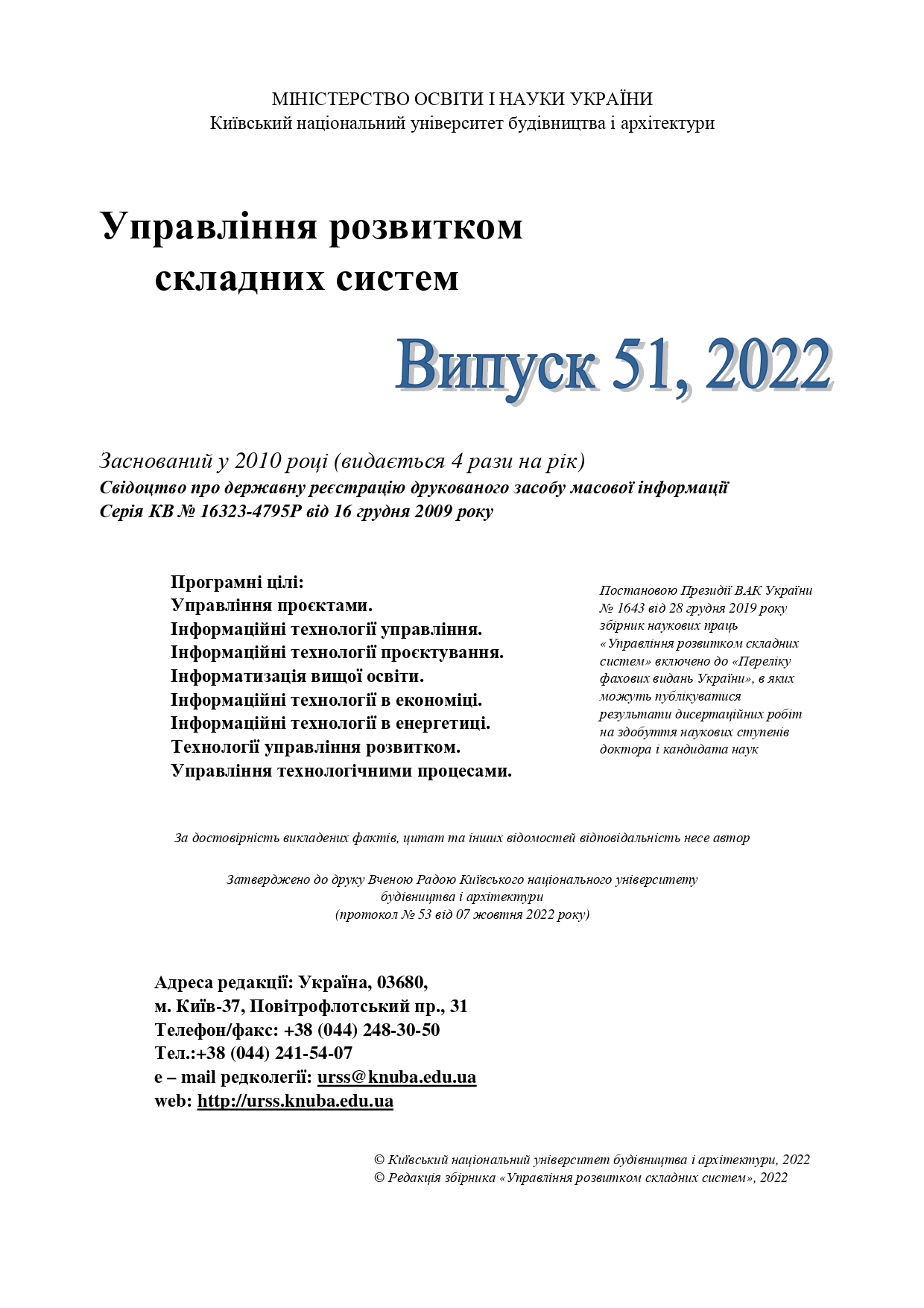ВПРОВАДЖЕННЯ ЦИФРОВИХ ТЕХНОЛОГІЙ ПРИ ЗДІЙСНЕННІ КОНТРОЛЮ ЗА ПУБЛІЧНИМИ ФІНАНСАМИ В ТЕРИТОРІАЛЬНІЙ ГРОМАДІ
DOI:
https://doi.org/10.32347/2412-9933.2022.51.58-68Ключові слова:
контроль за публічними фінансами, цифровізація, штучний інтелект, інформаційні системи, Blockchain, хмарні технології, DashboardАнотація
Обґрунтовано необхідність і важливість впровадження цифрових технологій при здійсненні контролю за публічними фінансами в територіальній громаді, що є вимогою часу та продовженням державної політики цифровізації. Виявлено й охарактеризовано сучасні тенденції цифрової трансформації механізмів контролю за публічними фінансами. Розглянуто необхідність використання автоматизованих інформаційних систем і цифрових технологій для підвищення ефективності здійснення контролю за публічними фінансами, що зумовлено такими чинниками: значними об’ємами інформації, які необхідно опрацювати; вимогами до швидкості та якості проведення перевірок; трудомісткістю контрольних процедур; специфікою та різноманіттям об’єктів перевірки; циклічністю технологічного процесу контролю; необхідністю швидкого та повного виявлення помилок. Проаналізовано важливі елементи впровадження цифрових технологій на державному рівні і виявлено проблеми цифровізації контролю за публічними фінансами територіальної громади. Визначено завдання інформаційних систем фінансового контролю й аналізу. Розглянуто потреби цифрового розвитку в контексті контролю за публічними фінансами, особливості вітчизняного та зарубіжного досвіду застосування програмного забезпечення у сфері контролю за публічними фінансами. Визначено етапи становлення контролю за публічними фінансами територіальних громад, а саме: 1) інформування; 2) опрацювання помилок; 3) взаємодія; 4) інноваційна обробка; 5) трансформація. Досліджено важливі елементи ІТ-інстументів та технологій, що впливають на розвиток здійснення контролю в територіальній громаді, такі як штучний інтелект, Blockchain, хмарні технології, Dashboard, верифікації (verification) і валідації (validation) даних. Наведено переваги та вигоди, які можна отримати впроваджуючи цифрові технології у роботу органів контролю. Держава здійснює поступовий перехід від інформатизації та електронного урядування до цифровізації та цифрового управління на основі використання Big Data з переходом до «deep machine learning» і використання штучного інтелекту (ІоТ). Зроблено висновки про необхідність цифровізації контролю за публічними фінансами в територіальній громаді, оскільки саме територіальна громада може мати найбільшу вигоду від інвестицій у цифрові технології, які забезпечать ефективність місцевого самоврядування та соціально-економічний розвиток громад.
Посилання
Ukrainian Institute of the Future. (2022). Ukraine 2030E is a country with a developed digital economy. Retrieved from 07 September 2022 https://strategy.uifuture.org/kraina-z-forovovoyu-cifrovoyu-ekonomikoyu.html#summary.
UN Department of Economic and Social Affairs (2020). Ukraine. E-Government Survey 2020: Digital Government in the Decade of Action for Sustainable Development. Retrieved from 07 September 2022 https://publicadministration.un.org/egovkb/en-us/Data/Country-Information/id/180-Ukraine.
Order of the Cabinet of Ministers of Ukraine № 1467-р. (2021). Strategy for implementation of digital development, digital transformations and digitalization of the state finance management system for the period until 2025. Retrieved from 07 September 2022 https://zakon.rada.gov.ua/laws/show/1467-2021-%D1%80.
Action. Digital community. (2022). Platform for digital transformation of regions in Ukraine. Retrieved from 07 September 2022 https://hromada. gov.ua/instruments.
Yevsyukova, O. V. (2021). Digital capacity of communities in Ukraine: trends and problems. Public administration: improvement and development, 5. Retrieved from 07 September 2022 http://www.dy.nayka.com.ua/?op=1&z=2053.
Pisarevska, T. A. (2015). Information systems of accounting and auditing. Kyiv: KNEU.
State Audit Service of Ukraine. (2022). Digitalization. Retrieved from 07 September 2022 https://dasu.gov.ua/ua/plugins/userPages/2409.
Accounting Chamber. Decision of the Accounting Chamber № 18-1. (2019). Development strategy of the Accounting Chamber for 2019-2024. Retrieved from 07 September 2022 https://rp.gov.ua/upload-files/About/Strategy/Strat2019-2024.pdf
State Treasury Service of Ukraine. (2022). PTK "Treasury Client - Treasury" User Guide - version 1.7. Retrieved from 07 September 2022 https://www.treasury.gov.ua/storage/app/sites/1/uploaded-files/manualKKK.pdf
How AI will transform accounting and finance.(2022). Retrieved from 07 September 2022 https://bakertilly.ua/news/id46419.
Neskhodovsky, I. S. (2011). Information systems and technologies of financial control. Kyiv: Center of Educational Literature.
Rubtsova, M. Yu. (2020). Cloud technologies as a tool for deepening the virtualization of the financial sector. Efficient economy, 5. Retrieved from 07 September 2022 http://www.economy.nayka.com.ua/?op=1&z=8009.
Forbes Advisor. Xero vs QuickBooks (2022). Retrieved from 07 September 2022 https://www.forbes.com/advisor/business/software/xero-vs-quickbooks.
Kashperska, A. I. (2019). Technological tools for modeling the internal control system of restaurant enterprises. Business Inform, 8, 143-149. Retrieved from 07 September 2022 http://nbuv.gov.ua/UJRN/binf_2019_8_21.
The Rockefeller Foundation. (2022). Co-Develop: Digital Public Infrastructure for an Equitable Recovery. Retrieved from 07 September 2022 https://www.rockefellerfoundation.org/report/co-develop-digital-public-infrastructure-for-an-equitable-recovery.
Waytobi.com. (2022). Dashboard - what is it and why is it needed. Retrieved from 07 September 2022 https://waytobi.com/ua/blog/kpi-dashboards.html.
Order of the Cabinet of Ministers of Ukraine № 67. (2018). Concept of development of the digital economy and society of Ukraine for 2018-2020. Retrieved from 07 September 2022 https://zakon.rada.gov.ua/laws/show/67-2018-%D1%80.
KPMG International. (2022). Report KMPG Pulse of Fintech H1 2022 – Fintech segments. Retrieved from 07 September 2022 https://assets.kpmg/content/dam/kpmg/xx/pdf/2022/08/pulse-of-fintech-h1-22.pdf.
IT-Enterprise. (2022). Blockchain. Technologies and concepts of Industry 4.0. Retrieved from 07 September 2022 https://www.it.ua/knowledge-base/technology-innovation/blockchain.
Brukhansky, R. F. (2018). Blockchain vs distributed ledger. Digital economy: trends and prospects: materials of the International Scientific and Practical Conference. Ternopil, 340. Retrieved from 07 September 2022 http://dspace.wunu.edu.ua/jspui/bitstream/316497/32279/1/%D0%A2%D0%B5%D0%B7%D0%B8_2018%20Digital%20Econom%20%281%29.pdf.
Karpenko, A. V., Osmak, A. I. (2017). Digital technology "blockchain" in public administration: essence, advantages and risks of application. Theoretical and applied issues of state formation. 21, 20–28. Retrieved from 07 September http://nbuv.gov.ua/UJRN/tppd_2017_21_4.
Quality Management Systems. Basic provisions and glossary of terms. (2008). (ISO 9000:2005, IDT): DSTU ISO 9000:2007. Kyiv: Derzhstandart Ukraine.
Tips from Andy Williamson. (2022). How to make the interaction between the community and the authorities successful? Retrieved from 07 September 2022 https://euprostir. org.ua/practices/142779.
##submission.downloads##
Опубліковано
Як цитувати
Номер
Розділ
Ліцензія
Авторське право (c) 2022 Дмитро Лапоша

Ця робота ліцензується відповідно до Creative Commons Attribution-NonCommercial-NoDerivatives 4.0 International License.

